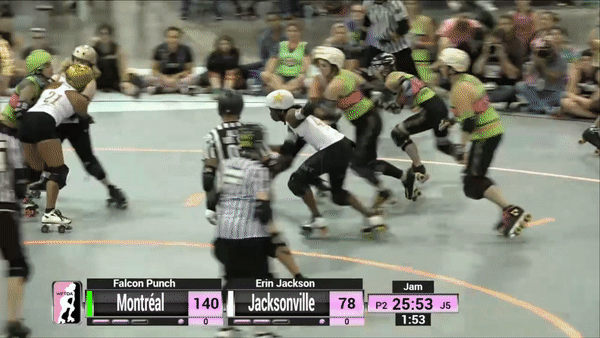Flat Track Roller Derby
we do it for love, not money

Unlike the banked track version that was synonymous with sport historically, the most common type of roller derby is now
played on a “flat-track.” Banked tracks are large and expensive to maintain and house, thus roller derby shifted towards
flat-tracks, which enables skaters to play more games at more locations.
Although the long history of roller derby contained elements of staging and predetermined outcomes, modern roller derby
is not “fixed,” though we still like to keep the traditional fun alive in many other ways, for one example, creating fun
skater names.
Each game consists of two, 30-minute periods that contains individual jams that can last up to two minutes. Two teams of
five (consisting of one jammer, three blockers, and one pivot, if no one has committed a penalty) try to score as many
points as possible within a jam. At the conclusion of the second period, the team with the most points wins. Compared to
other traditional sports that has scoring that is recorded in minimal digits, roller derby is an extremely high-scoring
game. Both teams can collectively score more than 300 points in one game. Roller derby is the only sport where offense
and defense is played simultaneously.
The jammers and pivots can be identified by the covers they wear on their helmets. The jammers wear a star, while the
pivots wear a stripe. Blockers do not wear helmet covers.
Roller derby is a full-contact sport, but it is not a violent sport. There is no punching, throwing elbows, or
clotheslining other skaters--and if there is, the perpetrating skater will most likely be expelled from a game and
possibly face other consequences, as that sort of behavior is under no circumstances tolerated. There are many strict
rules in place to keep this sport fun and safe for everybody.